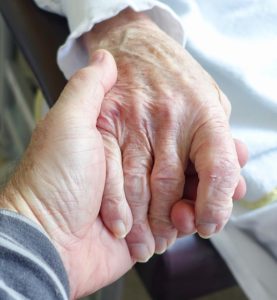Falls and the fear of falling in the elderly
On a beautiful spring day about a week ago, I was walking back to the office with my lunch. Well, I guess it’s considered downtown beautification, but for some reason slippery, uneven brick pavers are inset into the concrete sidewalks. Sure, it looks nice. Here’s the “however”: After time, these aforementioned bricks break, pop out or just plain disappear without being fixed.
I’m sure you can see where this is going. Right, I tripped. I stumbled. And I fell. It wasn’t graceful at all. My salad flew one way, my purse flew another. Fortunately, two young men (stifling laughter) retrieved my belongings and helped me up. Fortunately, the greatest injury was to my dignity.
Every day the ranks of the elderly are growing and falls continue to be a concern. And with the emphasis on aging in place, many seniors will continue to live in their homes. The March/April issue of the American Journal of Occupational Therapy, a publication of The American Occupational Therapy Association, focuses on fall prevention from the occupational therapy perspective.
According to research, an elder can develop a fear of falling even if a fall hasn’t occurred, which can increase anxiety and increases the risk for falls. If this fear isn’t addressed, it can lead to social isolation and a sedentary lifestyle. Clinical professor and director of professional education at the University of Chicago, Elizabeth W. Peterson, PhD, OTR/L, FAOTA, said in a release: “Occupational therapy practitioners are in a good place to identify environmental, behavioral and psychological risks for falls, in addition to the physical, because they are able to evaluate the person’s setting, occupation activities and goals.”
This is an ideal time of year to take a look around your facility to identify potential fall hazards. Is there an entry mat that’s worn out or curled at the edges? Are any of the dining room chair legs loose? Are handrails still bolted securely to the wall? That sort of thing.
How about taking a quick look at a resident’s mobility devices? It doesn’t take much time to see if the rubber stops on canes are secure and to make sure a walker doesn’t have “grocery cart” wheels.
Meanwhile, I’d better check the tread on my sneakers and buy a pair of knee pads.

Sandra Hoban was on I Advance Senior Care / Long-Term Living’s editorial staff for 17 years. She is one of the country’s longest-serving senior care journalists. Before joining Long-Term Living, she was a member of the promotions department at Advanstar Communications. In addition to her editorial experience, Sandi has served past roles in print and broadcast advertising as a traffic and talent coordinator.
Related Articles
Topics: Rehabilitation











